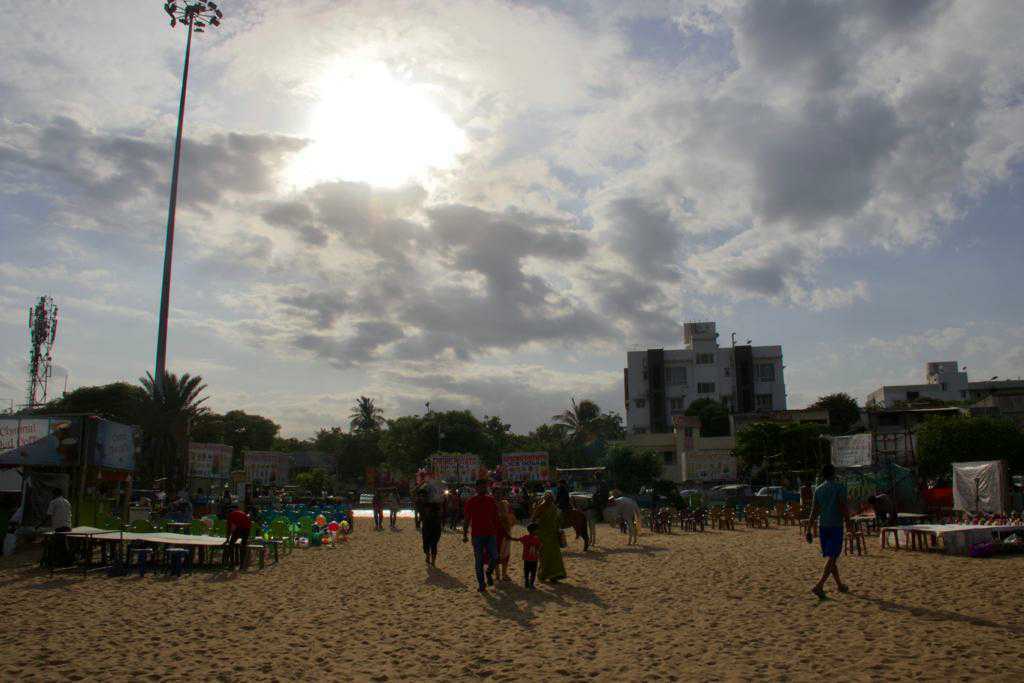In June of 2021, Chief Minister M.K. Stalin introduced ‘Singara Chennai 2.0,’ an ode to past projects not finished under Singara Chennai 1.0. These initiatives have been centred around giving various parts of the city a facelift.
As part of these efforts, beach beautification has been one of the areas of focus. Under Singara Chennai 2.0, the plan to revamp the city’s beaches has been dubbed ‘Project Blue.’
Agencies such as the Chennai Metropolitan Development Authority (CMDA) and Greater Chennai Corporation (GCC) have since begun chalking out plans for the city’s various beaches.
But these ideas come with some concerns for the health of the larger coastal ecosystem in the city and the livelihood of those who depend on it.
Read more: New plans for Singara Chennai raise hope among citizens
Goals for beach beautification in Chennai
Cycle tracks, sky decks for disabled people, underwater aquariums and water sports facilities have all been proposed as part of the effort to spruce up Chennai’s long coastline.
On top of adding various infrastructure to the beaches, a large portion of what was promised under ‘Project Blue’ was sustainability, and gaining the status of ‘Blue Flag Beach.’
For reference, Blue Flag beaches are essentially a certificate from the worldwide Foundation for Environmental Education (FEE), that a given beach meets its sustainability standards. Things like Blue Flag beaches are a result of the recently gained popularity of what is referred to as the Blue Economy.
“The language of the Blue economy seems to be very politically correct,” says Ajit Menon, a Professor working on the political economy of natural resource conflict at the Madras Institute of Development Studies. “Ecotourism was sold on the idea that communities would benefit from ecotourism and sustainability is all there if you look at policies, but in practice, the little research that has been done shows that it is not really sustainable, it doesn’t really benefit people who are living on the coast.”
Theme-based beach beautification projects by CMDA
Fast forward almost a year after the slew of announcements on beach beautification, in July 2022, the Chennai Metropolitian Developement Authority (CMDA) introduced the ‘Shoreline Renourishment and Revitalization Project.’
The CMDA’s revitalization project details a 30 km plan to connect all of Chennai’s coastline, with many of the infrastructure proposals that were promised by the MK Stalin administration under Singara Chennai 2.0 as part of Project Blue.
The CMDA has announced that they “may take up” various efforts toward addressing pollution and coastal erosion.
Some of these sustainability promises include the preservation of flora and fauna, the installation of bio-fences to tackle the rising sea level, and the creation of shoreline parks with salt-tolerant species.
As for recreational proposals, the CMDA’s plan covers lots of ground, by separating the shoreline into different themes.
Under this project, the shoreline between Marina and Santhome will have an entertainment theme while the one between Besant Nagar and Tiruvanmiyur will cover health and lifestyle. The shoreline between Neelankarai and Olive Beach will have an environmental theme and between Akkarai and Uthandi it’d be art and culture. The shoreline between Muttukadu and Kovalam will have water sports facilities.
So far, the CMDA has created a special purpose vehicle (SPV), which is a team of various community stakeholders and experts to create what is called a feasibility plan.
According to reporting done by DT Next, the CMDA has started its work between Neelankarai to Akkarai and Tiruvottiyur, where the agency will create cycle tracks for 5 km between Neelankarai and Akkari at Rs 20 crore and Tiruvottiyur beachfront development project will be implemented for 3 km at Rs 30 crore.
Parallely, beaches in North Chennai too have been identified for a similar makeover. The Kasimedu beach could be beautified with a cycle track, pathway for walkers, benches for resting, space for yoga and recreation, open gyms, food stalls and a play area for children. A feasibility study will be prepared to ascertain how this infrastructure can be created with a budgetary allocation of Rs 30 crore.

Read more: Why fisherfolk in Chennai are opposed to beach beautification projects
Stalling of past projects and concerns around beach beautification in Chennai
While these are the only official announcements of any progress on the various proposed beach beautification project to the public, the government of Tamil Nadu, CMDA, and GCC, have been working on similar projects under the radar for many years.
“Same ideas that were mooted in 2011 (and stopped due to protest by fisherfolk) have been rebooted but the project has been broken up into different stretches,” says Saravanan, an expert in advocacy for fishermen right’s and organiser of the Vettiver Collective.
Saravanan was asked to join the SPV for the beautification project but declined because he knew he would not be able to speak publicly about concerns around such projects if he had any.
Fishermen collectives have successfully stopped some of the larger, more advertised projects, due to concerns for possible environmental impacts as well as impacts on fisherfolk livelihood.
In 2009, the government introduced the ‘Elevated Expressway Project’ connecting the shoreline from the lighthouse to Kottivakkam. This was again opposed by fishing villages and the project was stopped.
The government has not made all of these projects accessible, some of them being done under the radar, on a smaller scale, and in various names.
“In the northern part of the estuary cement roads have been laid,” says Saravanan. “Even before the shoreline project was announced such moves have been carried out in silos. In this project, there will be more such infrastructure established.”
“The vision is the same but the project has different names and timelines,” says Saravanan. “The damage that could be caused and the intent of the project remains the same.”